AU Wheat & Canola Planted Areas Reduced While SA & VIC Continue to Face Dryness
Australia’s 2025 planting season shows a shift in crop area allocation, with planted areas for wheat and canola reduced and barley area expanded.
Precipitation in April was above forecast, supporting near to above-median soil moisture in New South Wales, Queensland, and Western Australia. May forecasts show below-median rainfall across all states, with early signs of moisture deficits in South Australia and Victoria. The June to October outlook indicates above-median rainfall, particularly in the east, supporting improved planting and yield potential.
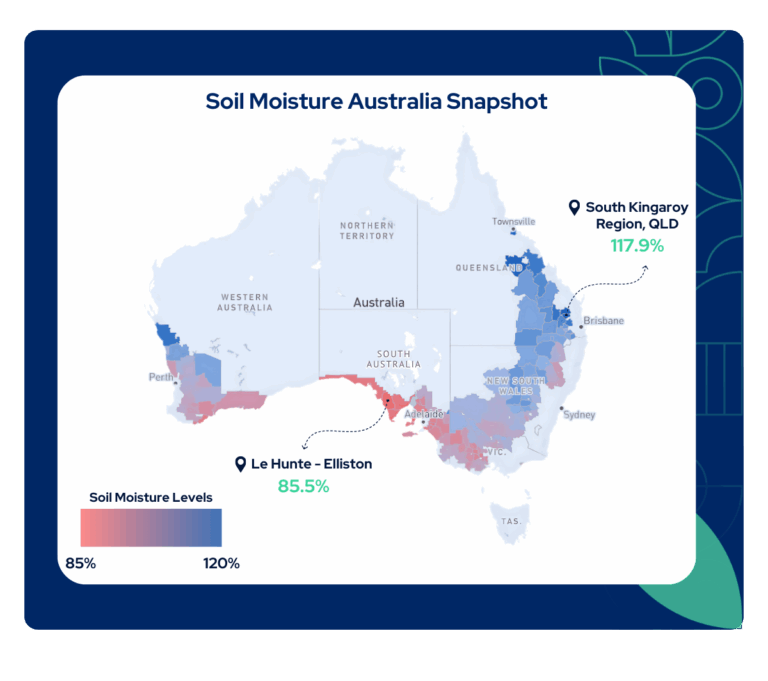
Planted Areas Overview
In 2025, planted area decreased for wheat and canola, while barley area increased at the national level. New South Wales, Western Australia, and Victoria recorded reductions in total planted area, while Queensland saw an increase in total plantings.
Wheat remains the largest crop by area, with Western Australia and New South Wales accounting for most plantings at 36% and 30%, respectively.
Barley area increased, with Western Australia leading at 38% of total plantings. South Australia and New South Wales each contributed 20%.
Canola area declined, with Western Australia making up 54% of total plantings, followed by New South Wales at 28%.
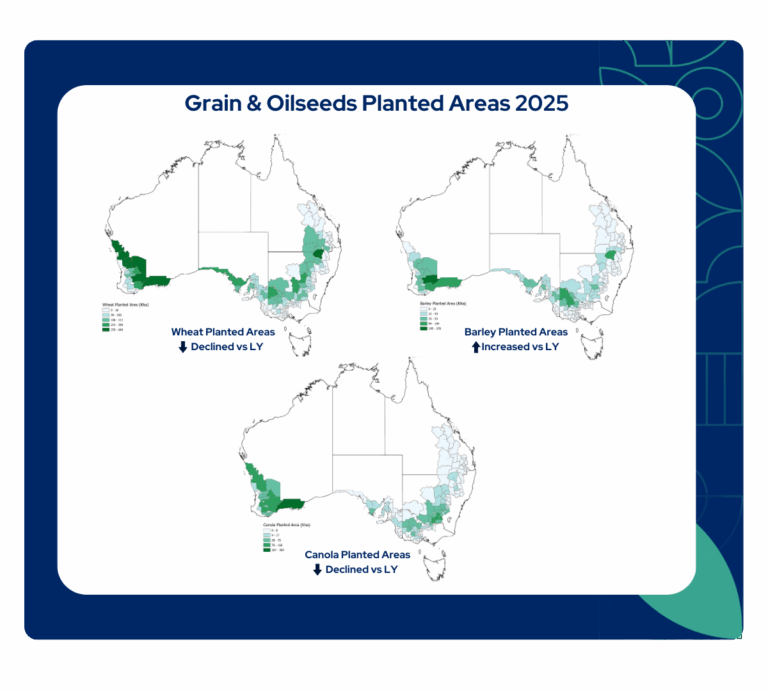
National Rainfall and Soil Moisture Outlook
April 2025 precipitation was higher than forecast, reaching 155% of the median vs 147%. The May 2025 forecast shows below-median rainfall across all states at 43% of the median. The June to October outlook remains above median at approximately 133%.
Soil moisture in April was near to above median. In early May, deficits were observed in upper layers, while deeper layers (28–100 cm) remained near to above median in most regions.
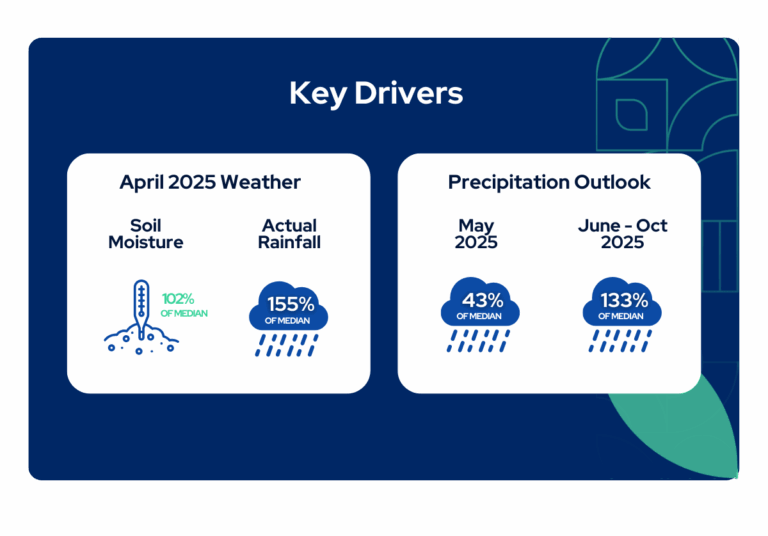
New South Wales
Soil moisture conditions across New South Wales declined from April to May 2025 across all major crops, with the most notable drop observed for canola, falling from 94% to 84% of the median. Wheat and barley also recorded decreases, though they remained near median levels.

Queensland
Soil moisture conditions across Queensland declined from April to May 2025. Both wheat and barley observed reductions to near-median levels with barley dropping from 136% of the median to 97% of the median.
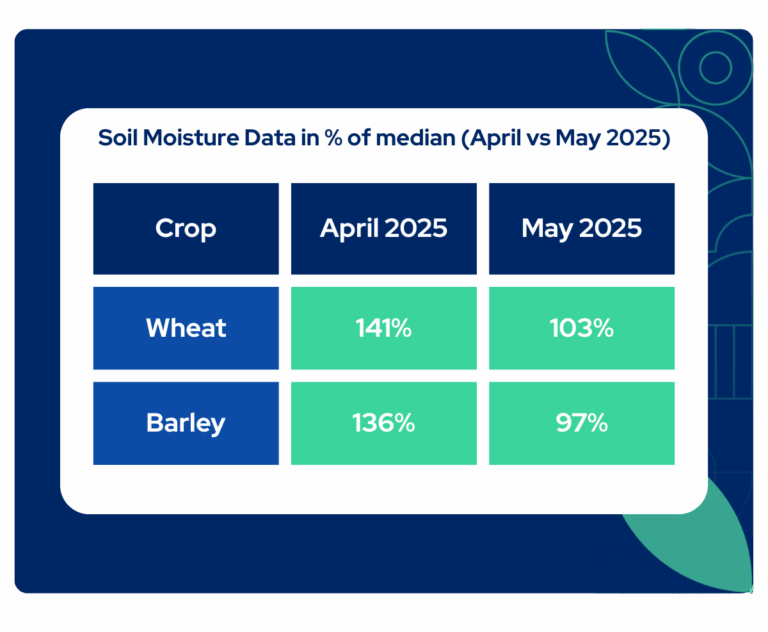
South Australia
South Australia continues to record some of the lowest soil moisture levels in the country. From April to May 2025, levels declined further across wheat, barley, and canola, with all three crops remaining well below the median. Based on historical records, South Australia’s current soil moisture levels rank as the lowest in the past 25 years for this time of the season.
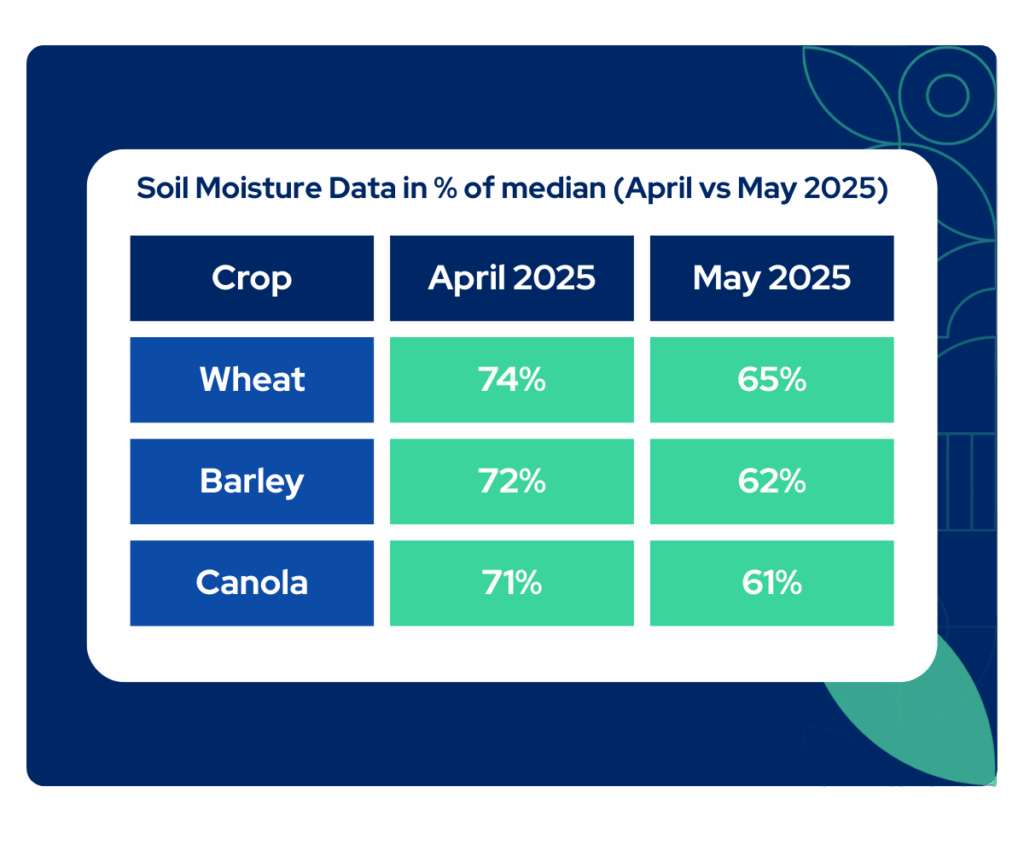
Victoria
Soil moisture levels in Victoria continued to fall from April to May 2025 across wheat, barley, and canola, all remaining below the median. Canola stands out with the driest conditions, ranking 24th out of the past 25 years based on historical comparisons.
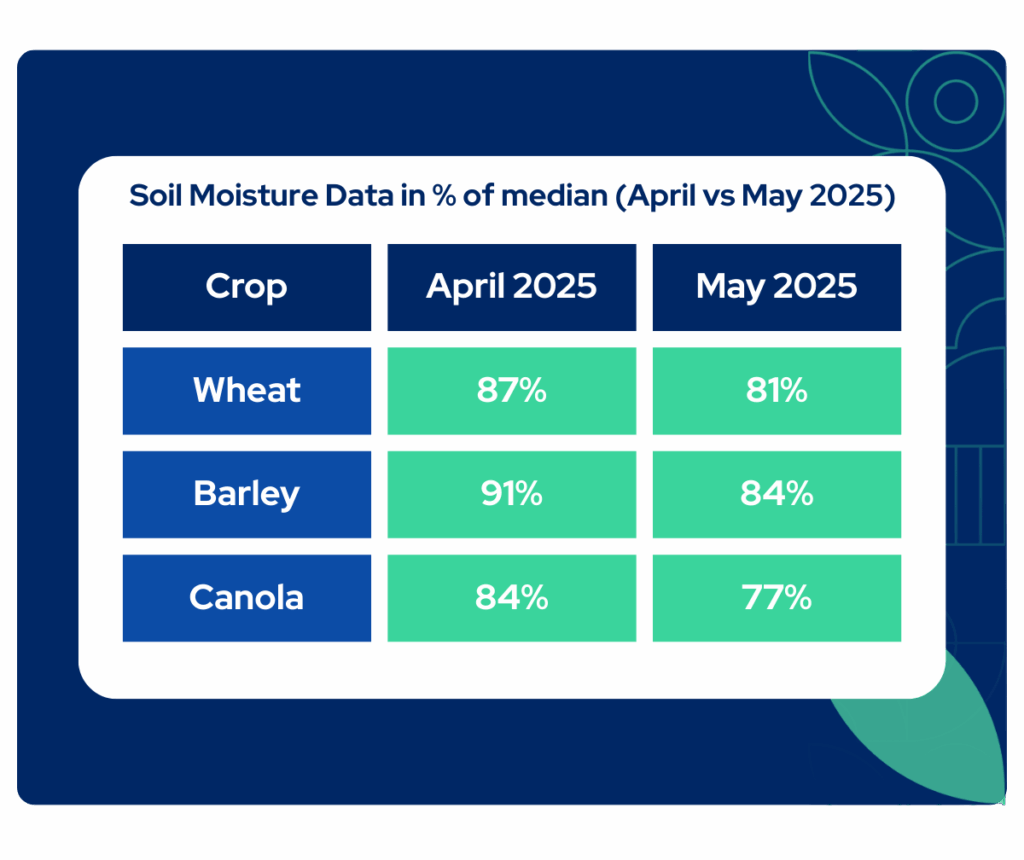
Western Australia
Western Australia recorded a sharp decline in soil moisture levels from April to May 2025 across all major crops. Canola recorded the most significant drop, falling from 116% to 82% of the median. Wheat and barley also moved from above-median conditions in April to below-median levels in May.
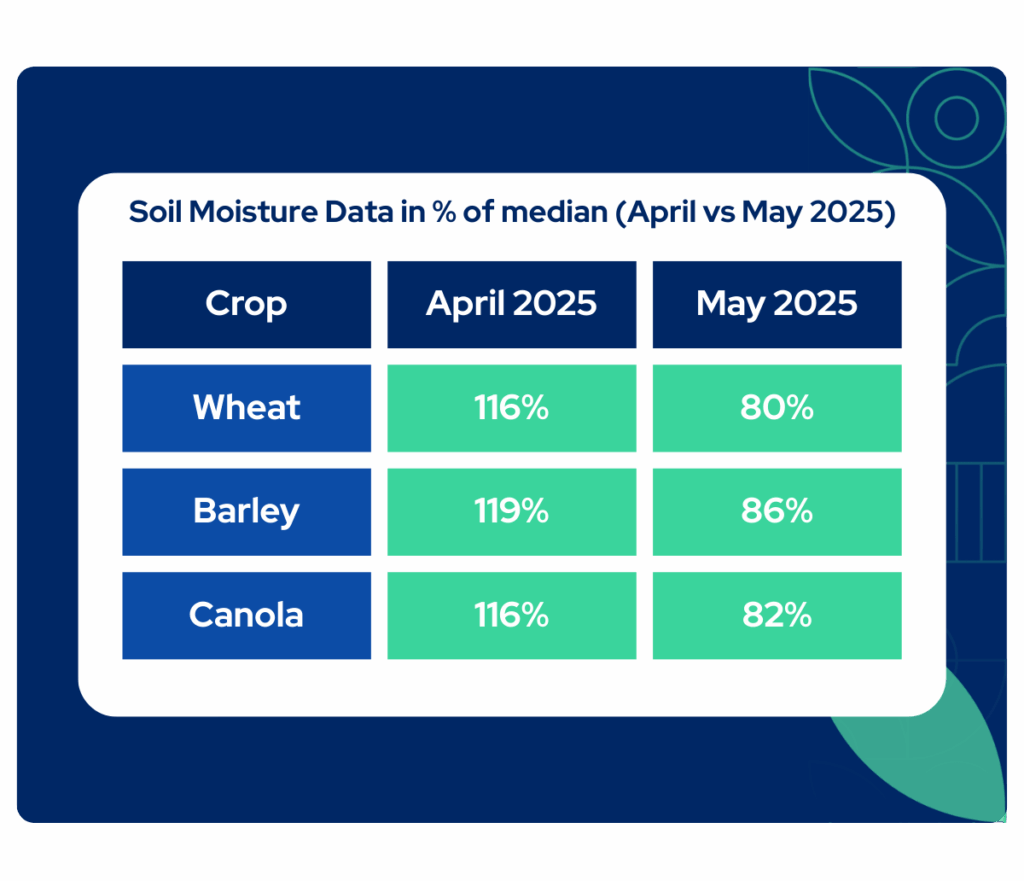
Australia’s 2025/26 season shows reduced wheat and canola planted areas, with an increase in barley. Soil moisture declined from April to May across all major states, with South Australia and Victoria recording some of the driest conditions in 25 years. May rainfall is forecast below median nationwide, while the June – October outlook indicates above-median rainfall in the east. These trends will be important to monitor for the upcoming harvest season.


Comments are closed